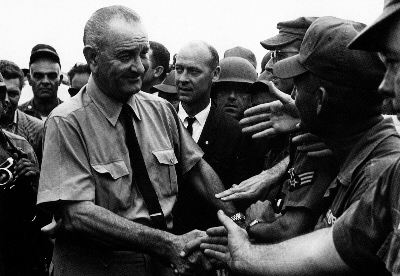History
Timeline of Key Points During the Cold War
THAW 1962-1969Less risk of war after Cuban Missile Crisis and the Berlin Wall Crisis
1963: President Kennedy was assassinated and replaced by Lyndon B. Johnson.

President Johnson
1964: Khrushchev replaced by Brezhnev (and Kosygin).
1966: Mao started the Chinese Cultural Revolution -- using enthusiastic
young communists known as Red Guards they attacked senior communist officials
-China was viewed as extremist and incredibly anti-western.
1968: Prague Spring -- People were upset with poor living conditions.
In January 1968 Dubcek became the head of the Communist Party, he wanted
a more open Communist society, in March Ludvik Svodoba a supporter of
Dubcek became Prime Minister, Dubcek introduced reforms known as 'socialism
with a human face' on censorship, business, workers councils, foreign
travel and a new parliament would be elected. This alarmed the USSR who
thought they would lose power over Eastern Europe if these reforms continued.
In June Warsaw pact armed forces threatened Dubcek to stop making reforms.
Even through he was willing to make some changes the Soviet government
decided to invade Czechoslovakia. Dubcek and his supporters were removed
from government.
--Brezhnev Doctrine - Brezhnev made a speech stating that if communist
government decided to make Western-style reforms it was up to other communist
governments to stop them, this he believed justified the Czechoslovakian
invasion in 1968 and Hungarian invasion in 1956.
1969: July 20 -- Apollo 11 lands on the moon
Reference Tools
Dictionary
Thesaurus
Maps
Scientific Calculator
Periodic Table
Translator
Unit Conversion
Divided Union
Introduction
Post War
The ‘Red Scare’
Civil Rights Movement
Non-Violent Direct Action
John F Kennedy
Lyndon Johnson
Growth of Black Power
The Woman’s Movement
The Student Movement
Nixon and Watergate
Cold War
Period 1945 - 1962
Period 1956 - 1962
Period 1962-1969
Period 1969 -1979
Period 1979 - 1985
Period 1985- 1991
